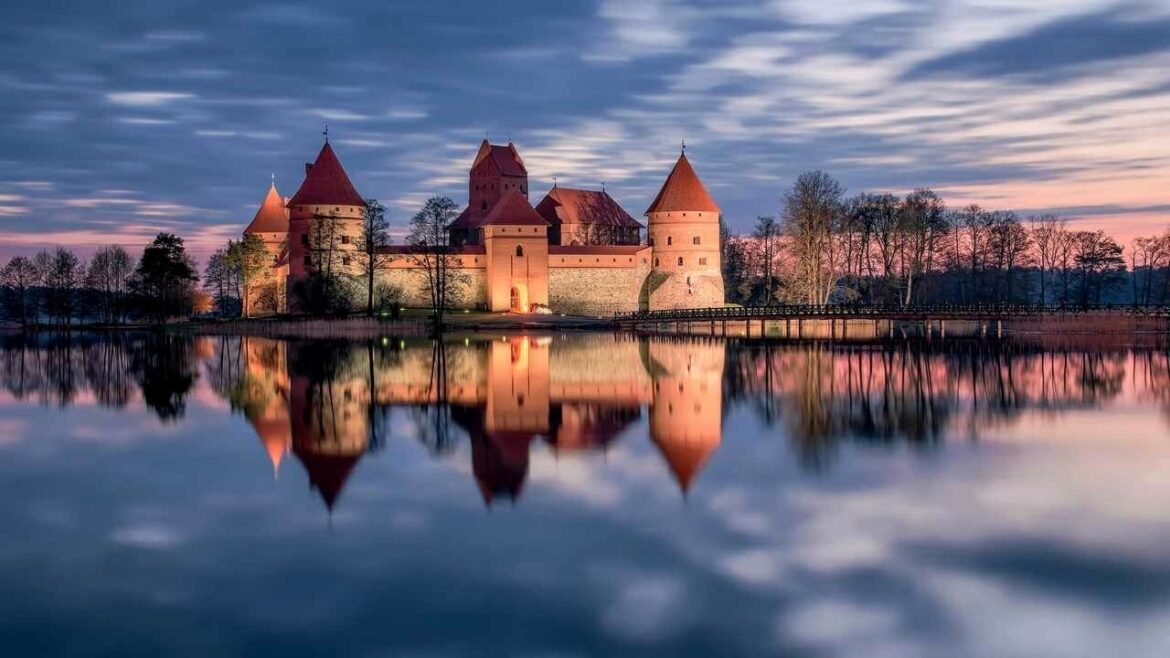The Baltic region—comprising Estonia, Latvia, and Lithuania—is a hidden gem for travelers fascinated by medieval history, stunning architecture, and breathtaking landscapes. Dotted across these countries are castles that tell tales of knights, kings, and epic battles. From well-preserved fortresses to romantic ruins, the castles of the Baltics offer a glimpse into a past shaped by crusaders, nobility, and wars for independence.
Estonia: Where Medieval Legends Come to Life
Estonia is home to some of the most well-preserved medieval castles in Europe. Many of them date back to the time of the Teutonic Order and the Livonian Brothers of the Sword, who controlled the region in the Middle Ages.
- Toompea Castle (Tallinn) – Perched on a limestone hill in the capital city, Toompea Castle has been a seat of power since the 13th century. Today, it houses the Estonian Parliament but retains its medieval charm with its well-preserved towers and thick walls.
- Narva Castle – Located on the border with Russia, this imposing fortress was built by the Danes in the 13th century and later controlled by the Livonian Order. With its massive walls and strategic location along the Narva River, it has witnessed numerous sieges and battles.
- Kuressaare Castle – Situated on the island of Saaremaa, this beautifully preserved 14th-century castle is a fine example of medieval military architecture. Today, it serves as a museum where visitors can explore exhibitions on Estonian history and folklore.
Latvia: A Land of Grand Castles and Romantic Ruins
Latvia’s castles range from majestic fortresses to picturesque ruins, offering a perfect blend of history and scenic beauty.
- Riga Castle – Founded in 1330 by the Livonian Order, Riga Castle has undergone several transformations over the centuries. Today, it serves as the official residence of the Latvian president. Its impressive towers and thick walls stand as a symbol of the country’s resilience.
- Turaida Castle – Nestled in the stunning Gauja National Park, Turaida Castle is one of Latvia’s most picturesque fortresses. Built in the 13th century, it offers breathtaking views of the surrounding forests and the Gauja River. The nearby Gutmanis Cave is linked to the legendary story of the “Rose of Turaida,” adding a romantic touch to the visit.
- Cesis Castle – A true medieval masterpiece, Cesis Castle was the stronghold of the Livonian Order. Visitors can explore its atmospheric ruins, climb the medieval towers, and even experience historical reenactments that bring the past to life.
Lithuania: Castles of Kings and Grand Dukes
Lithuania’s castles played a crucial role in the country’s struggle against the Teutonic Order and later conflicts with neighboring powers.
- Trakai Island Castle – Perhaps the most famous castle in the Baltics, Trakai Castle is located on an island in Lake Galvė. Built in the 14th century, it served as the residence of the Grand Dukes of Lithuania. The castle, with its red brick walls and fairy-tale setting, is one of the most photographed landmarks in the region.
- Kaunas Castle – One of the oldest stone castles in Lithuania, Kaunas Castle was built in the 14th century to defend against the Teutonic Knights. Its unique round tower and picturesque riverside location make it a must-visit site.
- Gediminas’ Tower (Vilnius) – The remaining tower of Vilnius’ Upper Castle, Gediminas’ Tower, stands as a symbol of Lithuania’s history and independence. From the top, visitors can enjoy panoramic views of the capital city.
Experiencing the Baltic Castles
Visiting the castles of the Baltics is not just about exploring historical ruins—it’s about immersing yourself in the rich heritage of the region. Many castles host festivals, medieval reenactments, and guided tours that transport visitors back in time.
- Medieval Festivals – Events such as the Tallinn Medieval Days and the Cesis Castle Festival bring the past to life with jousting tournaments, traditional music, and crafts.
- Ghost Tours – Some castles, like Kuressaare and Cesis, offer ghost tours that delve into eerie legends and supernatural tales.
- Outdoor Adventures – Many castles, like those in Gauja National Park and Trakai, are surrounded by stunning natural landscapes, making them perfect for hiking, boating, and photography.
Travel Tips for Visiting Baltic Castles
- Best Time to Visit – Spring and summer (May–September) offer pleasant weather and lively festivals. However, winter visits can be magical, especially in places like Trakai Castle, which looks stunning against a snowy backdrop.
- Getting Around – The Baltic countries have excellent transportation links, and many castles can be reached by car, bus, or even bicycle. Renting a car is ideal for exploring more remote sites.
- Tickets and Tours – Some castles require an entrance fee, while others are free to visit. Guided tours are highly recommended for a deeper understanding of the history and legends associated with each site.
- Local Etiquette – Respect historical sites by following guidelines, avoiding climbing on ruins, and supporting local museums through donations or ticket purchases.
The castles of Estonia, Latvia, and Lithuania offer a fascinating journey through history, from the days of knights and crusaders to the rise of independent Baltic states. Whether you are exploring a mighty fortress, admiring a fairy-tale castle, or wandering through mysterious ruins, these sites promise unforgettable experiences.
For travelers seeking a mix of history, adventure, and breathtaking scenery, the Baltic castles are an enchanting destination waiting to be discovered.


